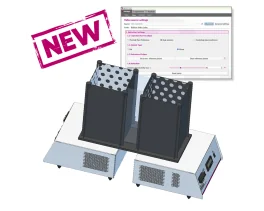Authors
D. Ardid, A. Alloui, G. Brousse, D. Jourdan, P. Picard et al.
Lab
Faculté de médecine, Laboratoire de pharmacologie Médicale, EPI INSERM 9904, Clermont-Ferrand, France ; CHU, Centre d'évaluation et de traitement de la douleur, Clermont-Ferrand, France.
Journal
British Journal of Pharmacology
Abstract
The benefit of antidepressant treatment in human neuropathic pain is now well documented, but the effect is limited and slow to appear. It has been demonstrated that the association of a 5-HT1A antagonist and a serotoninergic antidepressant reduced the delay of action and increases the thymoanaleptic effect of the drug. The purpose of this work was to evaluate the combination of an antidepressant and a 5-HT1A antagonist in animal models of chronic neuropathic pain. We studied the antinociceptive effect of the co-administration of clomipramine and a 5-HT1A antagonist (WAY 100,635) in a pain test applied in normal rats and in two models of neurogenic sustained pain (mononeuropathic and diabetic rats). The results show an increase in the antinociceptive effect of acutely injected clomipramine due to WAY 100,635 in these models, which is majored when the two drugs are repeatedly injected. The 5-HT1A antagonist reduced the delay of onset and increased the maximal antinociceptive effect of clomipramine. These new findings argue for using the combination of an antidepressant and a 5-HT1A antagonist in human neuropathic pain therapy.
Source :
http://onlinelibrary.wiley.com/doi/10.1038/sj.bjp.0703897/full

 Pain - Thermal Allodynia / Hyperalgesia
Pain - Thermal Allodynia / Hyperalgesia Pain - Spontaneous Pain - Postural Deficit
Pain - Spontaneous Pain - Postural Deficit Pain - Mechanical Allodynia / Hyperalgesia
Pain - Mechanical Allodynia / Hyperalgesia Learning/Memory - Attention - Addiction
Learning/Memory - Attention - Addiction Physiology & Respiratory Research
Physiology & Respiratory Research











![Dynamic Weight Bearing 2.0 – Postural Module [Add-on]](https://bioseb.com/733-home_default/dynamic-weight-bearing-20-add-on-postural-module.jpg)
























 Pain
Pain Central Nervous System (CNS)
Central Nervous System (CNS) Neurodegeneration
Neurodegeneration Sensory system
Sensory system Motor control
Motor control Mood Disorders
Mood Disorders Other disorders
Other disorders Muscular system
Muscular system Joints
Joints Metabolism
Metabolism Cross-disciplinary subjects
Cross-disciplinary subjects CONFERENCES & MEETINGS
CONFERENCES & MEETINGS